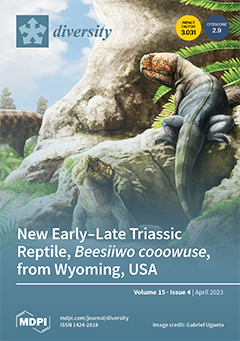Following disturbances, ecosystems are more susceptible to invasion by non-native species. Furthermore, it is important to determine the impact of alien tree species on soil regeneration processes during secondary succession. In this study, we analyzed the effect of native and late successional common
[...] Read more.
Following disturbances, ecosystems are more susceptible to invasion by non-native species. Furthermore, it is important to determine the impact of alien tree species on soil regeneration processes during secondary succession. In this study, we analyzed the effect of native and late successional common oak (
Quercus robur) and non-native red oak (
Q. rubra) on soil physicochemical (pH, carbon, and nutrient content) and microbial properties (microbial biomass [Cmic] and respiration [RESP]) nearly 30 years after severe fire disturbance. Post-fire soils under
Q. rubra had organic horizons with a greater mass, lower pH values, and depleted nutrient (N, Ca, K, Mg, and P) contents than soils under
Q. robur. The impact of
Q. robur as a late successional species on soil properties 30 years after a disturbance was similar to that of pioneer species (Scots pine, European larch, common birch, and black alder), as is indicated in previous studies. Most of the studied physicochemical (bulk density, soil organic carbon, N, Ca, K, and P content) and microbial (RESP and Cmic) soil parameters under
Q. robur were within the ranges found for post-fire soils under pioneer tree species. Only the pH and Mg and Na contents in organic horizons were higher under
Q. robur than under pioneer species. Our results indicate that
Q. robur could be a valuable addition to reforestation sites after fire disturbance, especially in more fertile microhabitats. Due to the depletion of soil nutrients, care should be taken when introducing
Q. rubra during the reforestation of post-fire sites, especially in larger groups.
Full article





